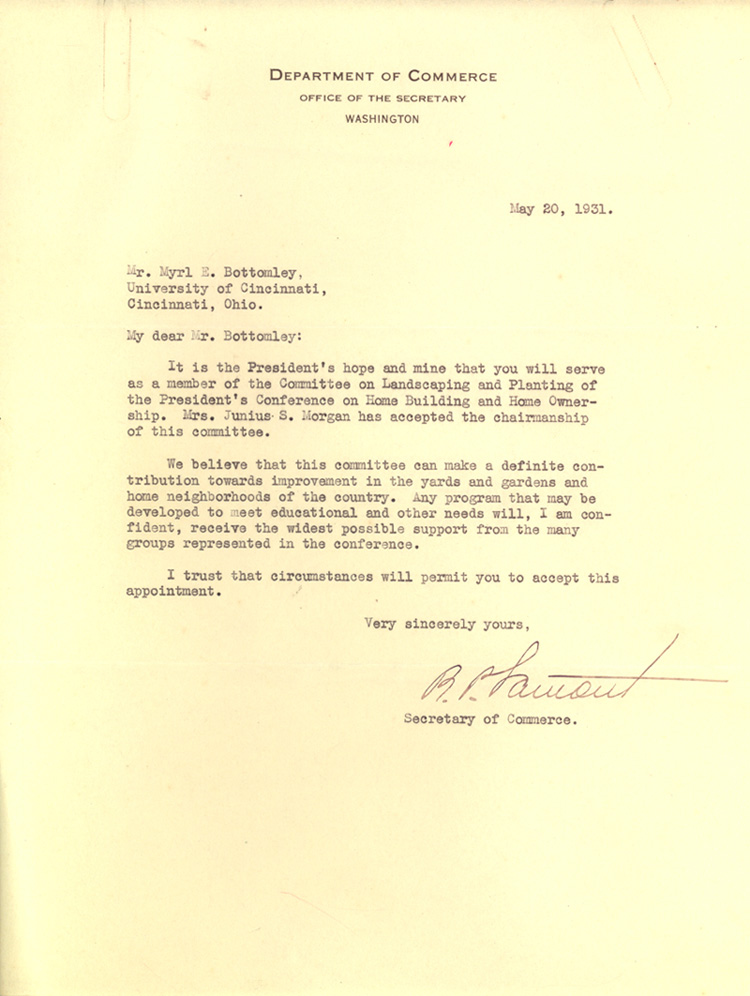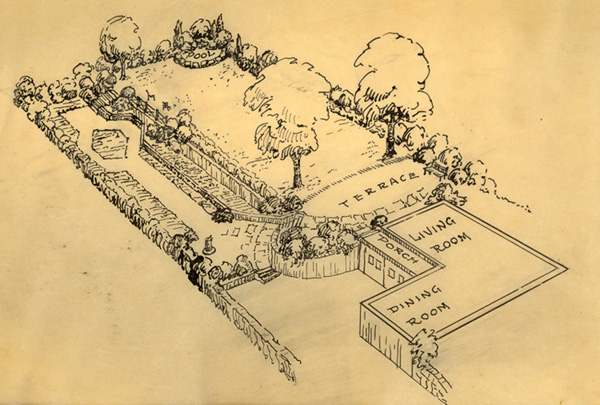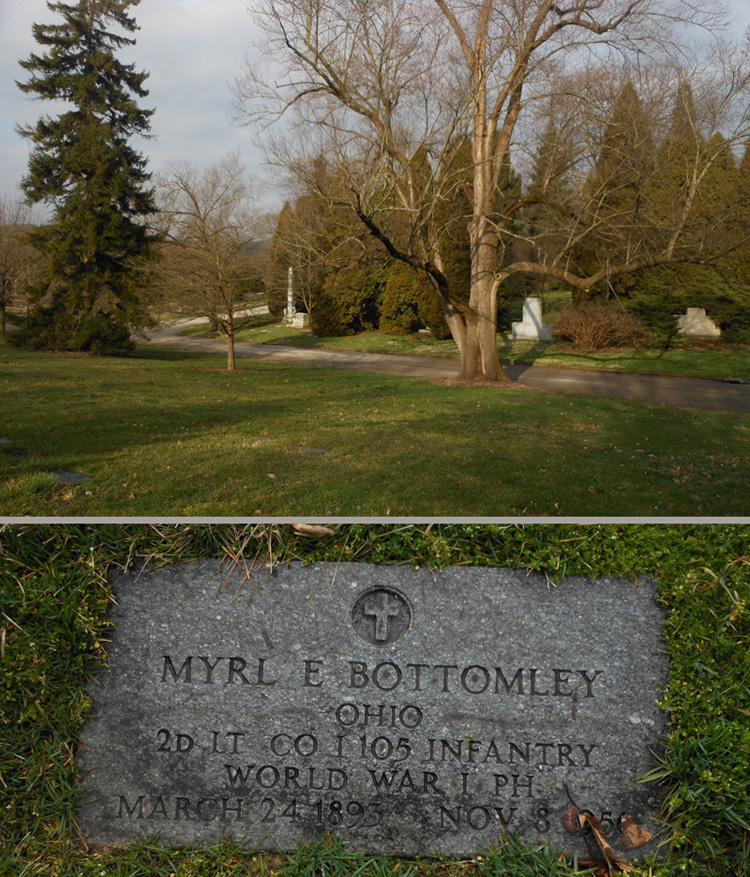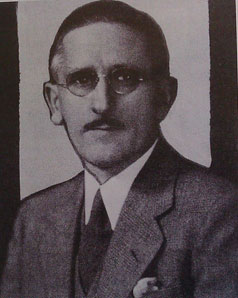By Janice Schulz
In 1922, the College of Engineering and Commerce started a new degree program in Architecture that included a few classes in Landscape Design. The classes were well received, and when the Architecture Department moved to the newly created School of Applied Arts in 1925, a complete degree in Landscape Architecture was offered. With the growth of the Landscape program and the School of Applied Arts, a dedicated professor was needed to lead the Landscape Architecture program. Enter Professor Myrl Elijah Bottomley in 1926. A native of Michigan, Bottomley earned his Bachelor of Science degree from Michigan State College in 1916. He served in World War I as a lieutenant on the front lines in France, where, as a result of gas attacks, he developed health issues that would stay with him for the rest of his life. After returning from the war, he earned a Master of Landscape Design from Cornell University in 1922. Before coming to UC he served as Assistant Professor of Landscape Architecture at Iowa State College from 1922-1925.

Professor Bottomly was tapped to serve on one of President Hoover’s committees. The letter inviting him is part of his papers in the Archives & Rare Books Library.
Professor Bottomley was on the faculty at UC from 1926 until 1956, teaching classes in both landscape architecture and city planning, and serving as the University’s Campus Landscape Architect. Since early in his career, his specialty was the design of small gardens and the development of suburban and city residential properties. Bottomley felt that this was an area neglected by professional landscape architects, who tended to put their energies into the design of large estates, but at the same time,not well served by nurseries and gardeners, who did not have the knowledge and experience of true design. His publications include the books The Design of Small Properties (1926), The Art of Home Landscape (1935), and New Designs of Small Properties (1948), as well as numerous articles. His writings had two main goals: to instruct homeowners with a do-it-yourself drive in the art of landscape design, or to convince homeowners that hiring a professional to do it for them was a good investment. Bottomley was a popular speaker at garden associations and a frequent contributor to home magazines such as Better Homes & Gardens, McCall’s, and House Beautiful. He was also known for the foliage key system he developed for the identification of perennials, which he and other educators used in landscape instruction.

One of Professor Bottomley’s original drawings for his book New Designs of Small Properties. The ARB collection includes 119 of his original pencil and ink drawings.
Bottomley’s reputation as an expert in the area of small and residential landscaping earned him spots on some prestigious committees. The President’s Conference on Home Building and Home Ownership chose him as a member of their Committee on Landscaping and Planting in 1931. It was one of 25 fact-finding committees charged by President Hoover to “bring together facts concerning housing throughout the United States; to determine the factors that influence housing, favorably or unfavorably, and how they are inter-related in cities, in smaller communities, and in rural areas; to focus attention upon the problems of home ownership and to suggest means of meeting them.”* The committee’s scope of work included landscaping for small homes and residential areas, home gardens, and neighborhood development. In 1944, Bottomley was selected by the Cincinnati City Planning Commission to work on the Planning & Design Section of the new Cincinnati Metropolitan Master Plan, which was adopted on November 22, 1948. The plan reflects Bottomley’s interests with it focus on residential development, especially in the peripheral areas of the metropolitan area. The concept of organizing neighborhoods around schools, civic centers, and business districts hinged on the cooperation of homeowners who had pride in their community, which was a trait that Bottomley encouraged with his writings.
By 1946, the School of Applied Arts had grown to include design and fine art programs and became the independent College of Applied Arts, which would in turn become our current College of Design, Architecture, Art, and Planning. In a reorganization of the college, the Landscape Architecture degree program was discontinued beginning with the 1950-1951 academic year. Professor Bottomley continued to teach one course in landscape design for the Architecture program that year, but then moved to solely teaching city planning classes, such as “City Planning,” “Site Planning,” and “ City Planning Problems.”

Professor Bottomley is buried in this lot in beautiful Spring Grove Cemetery alongside his wife Esther. Photos courtesy of Phil Nuxhall.
Professor Bottomley died on November 8, 1956. He had taken a seven-week leave of absence due to illness, but returned to campus two days before his death and worked right up to his last day. Quite appropriately, he rests alongside his wife on a hillside in the city’s most beautifully landscaped cemetery, Spring Grove. As a testament to his contributions in the field of landscape architecture, in 2000 Bottomley was included in the publication Pioneers of American Landscape Design, available in the DAAP Library reference collection.
The College of Applied Arts and eventually DAAP continued to offer a few courses in Landscape Design as electives in its Architecture program, but it was not until 1978 that students were again able to concentrate in the area with the introduction of a Horticulture curriculum in the Evening College’s Associate and Bachelor of Science degree programs. The program grew steadily, becoming part of the newly formed College of Evening and Continuing Education. When CECE closed in 2002, the program was moved to the College of Applied Science. With the consolidation of programs from CAS to other areas in 2009, the program went full circle, returning to the College of Design, Architecture, Art, and Planning. A certificate program in Landscape Design is now part of their Horticultural curriculum. Professor Bottomley would be happy to see that the program that he led and nurtured is back home.
In 1974, Bottomley’s wife Esther donated her husband’s papers to the University Archives. The seven-box collection includes 119 of his original pencil and ink drawings of landscape designs, most of which were prepared for the publication of his 1948 book New Designs of Small Properties, as well as articles and lecture notes, material from two books on which he collaborated, miscellaneous papers, and slides. A complete finding aid is available on OhioLINK’s Finding Aid Repository. For further information on the Archives & Rare Books Library and its holdings, please call 513.556.1959, email archives@ucmail.uc.edu, or visit the website at http://www.libraries.uc.edu/libraries/arb/index.html.
___________________________________________________________________________________________
*Register of the President’s Conference on Home Building and Home Ownership (1931 : Washington, D.C.) Records, 1931-1932, Hoover Institution Archives, Stanford University

